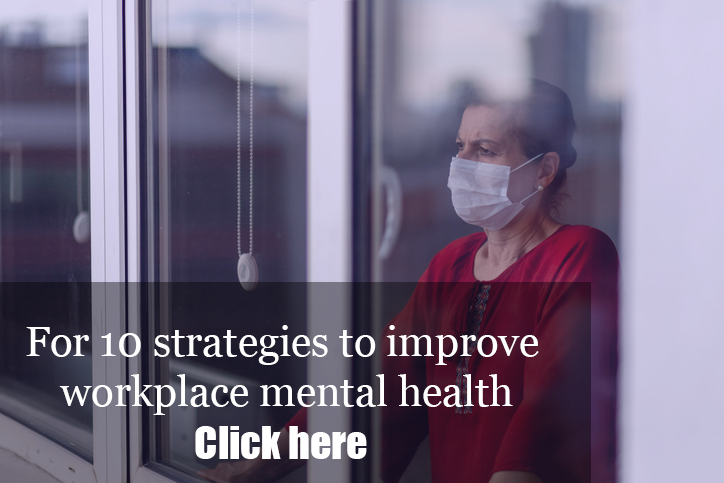Although depression risk is soaring for employees, the vast majority aren’t getting the screening and care they need–and it’s costing employers big time.
New research from the Integrated Benefits Institute finds that proper screening for depression, as well as some cancers and chronic conditions such as hypertension, diabetes and obesity, is lagging among employees. Not only is that dangerous, but lack of preventive care also is driving up healthcare and productivity costs for employers.
Depression, in particular, represents a disproportionately high productivity cost to employers, averaging $17 per employee per year in disability wage replacement costs compared with $2 for diabetes, the next-highest chronic condition. Just one in 10 people get the recommended screening for depression, according to the research.
The data comes on the heels of other dramatic findings from Total Brain’s July Mental Health Index that reported depression risk is soaring for employees due to the coronavirus pandemic. The risk for depression among U.S. workers has risen 102%–and 305% for workers aged 20-39–since the start of COVID-19.
Related: Depression risk is soaring for workers
IBI’s research reinforces that screenings for serious health issues can “save lives, reduce treatment recovery times and lower healthcare costs, while also impacting productivity and business performance for employers,” says IBI President Kelly McDevitt.
 Gaps for recommended cancer screenings, for instance, ranged from 19% (cervical cancers) to 35% (colorectal cancers)–lost opportunities for early treatments that also can result in longer recovery times, more time away from work on leave and an increased chance of exits from the labor force for older employees, IBI says.
Gaps for recommended cancer screenings, for instance, ranged from 19% (cervical cancers) to 35% (colorectal cancers)–lost opportunities for early treatments that also can result in longer recovery times, more time away from work on leave and an increased chance of exits from the labor force for older employees, IBI says.
The study also found the average disability cost for people who take leave for a health issue in less complicated stages was between 4% to 52% lower than the costs for those on leave with a more severe health condition. Further, the cost difference between severe and mild forms of diseases is most dramatic for those with hypertension (a cost difference of $6,019 per incidence) and depression (difference of $4,622), with the lowest impact for diabetes (difference of $387).
Preventive care already was lagging before COVID-19, and there are concerns among experts that it will worsen due to challenges from the pandemic. That’s why employers need to step up in encouraging care and screenings, McDevitt says.
“With delayed care and barriers to care in the current environment, it has become critical that employers attempt to remove as many obstacles as possible and encourage employees and their families to get back on the pathway to wellness.”

